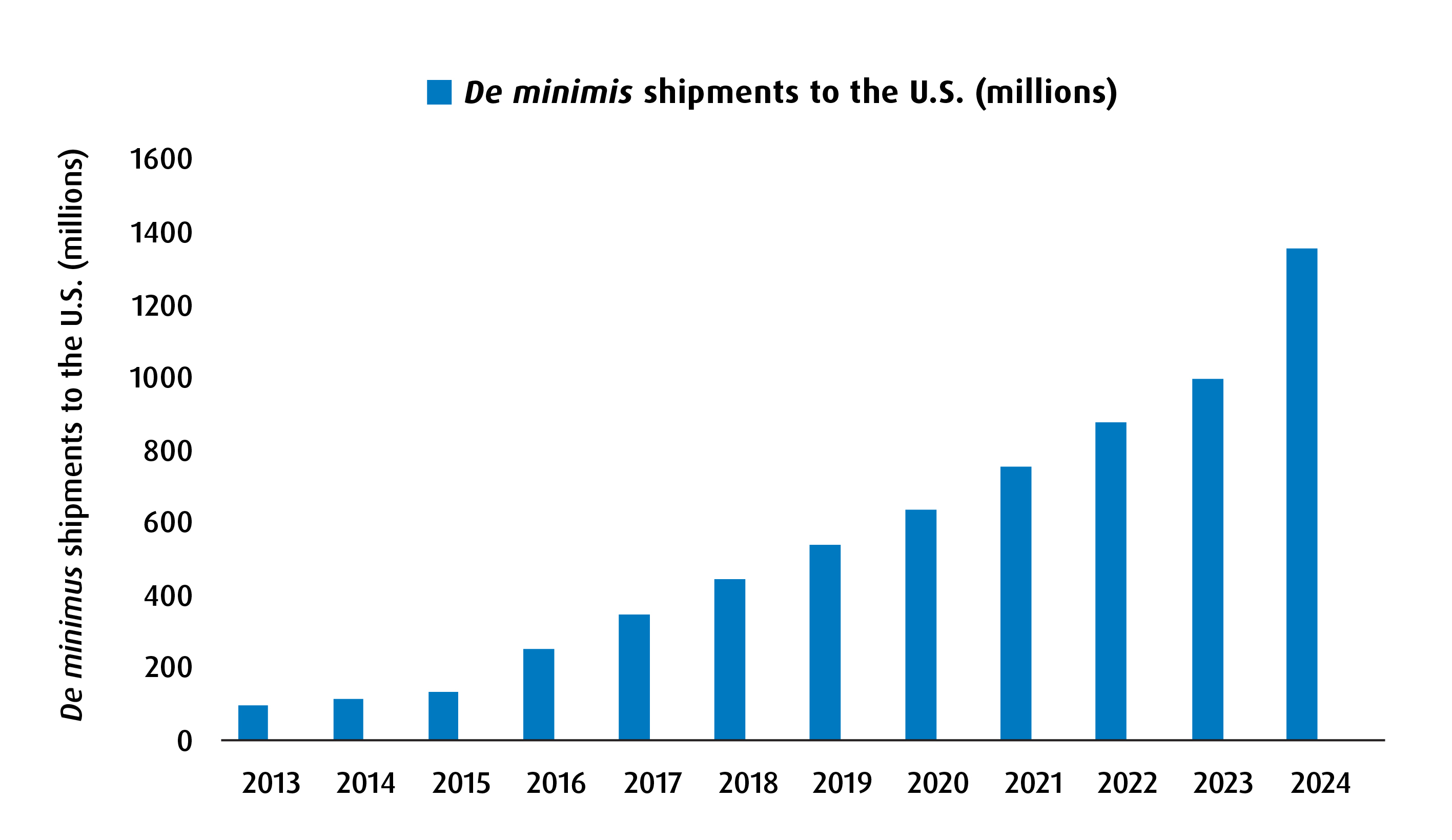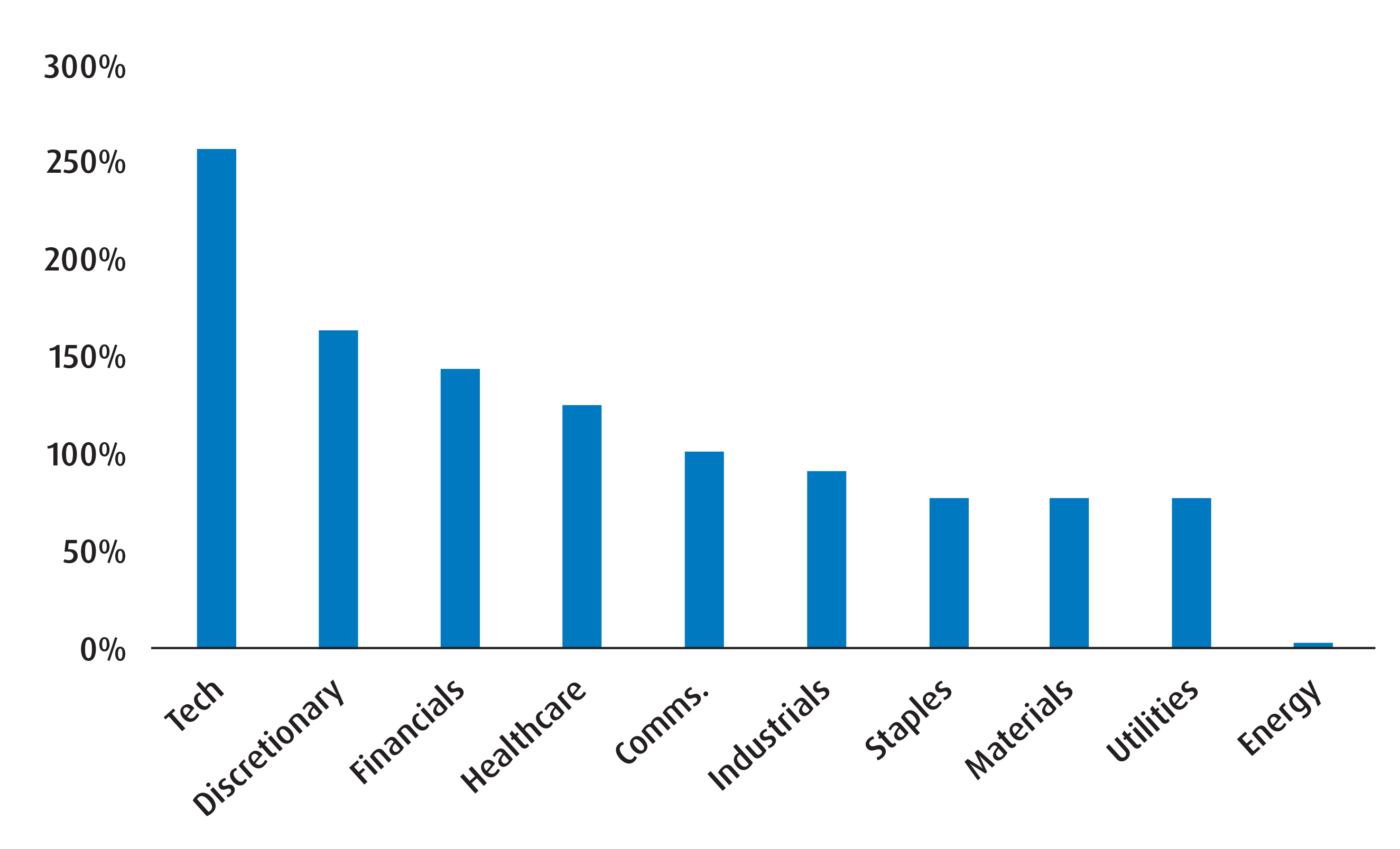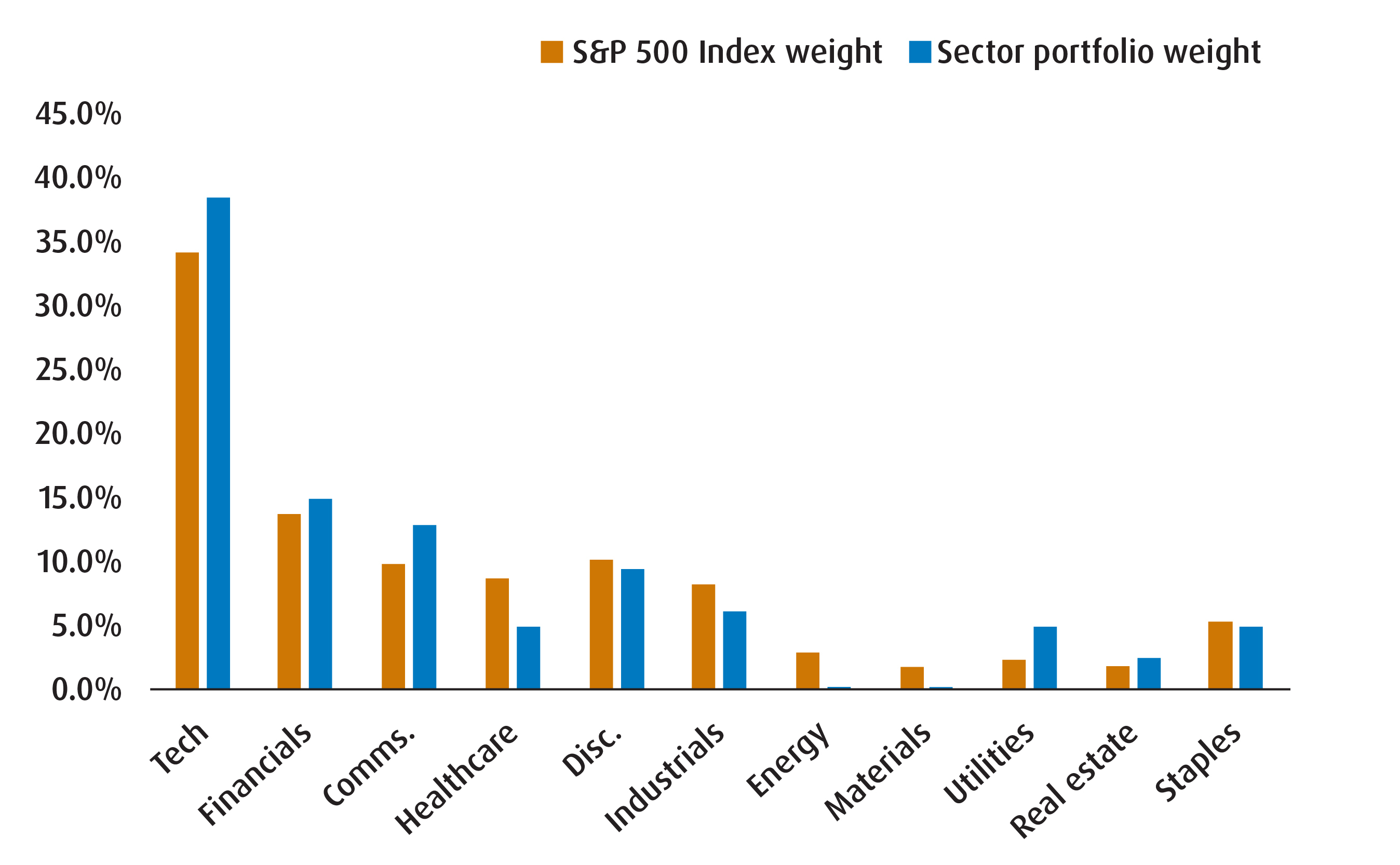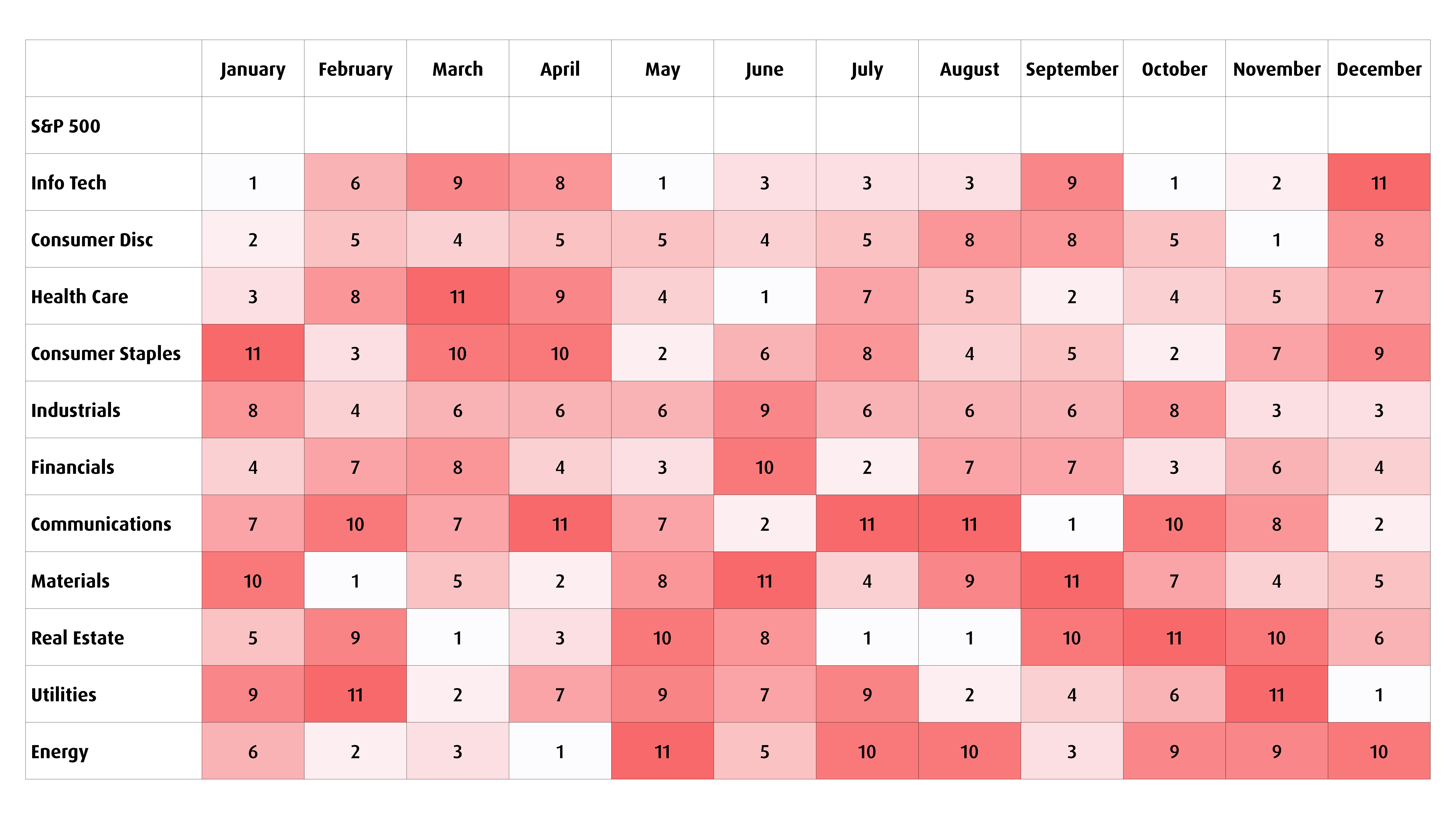Sectors portfolio: The importance of the ‘de minimis’ exception
Sep. 8, 2025- Among the myriad of events that have come up over the past few weeks, the most relevant one for U.S. sector investors might just be the end of the de minimis tariff exception.
- Indeed, as of August 29, the U.S. has started levying tariffs on imports that are less than US$800 at the designated rate under IEEPA1 (depending on the product’s country of origin).
- One of the reasons why this shift is seismic is that the exemption has been an integral part of the ‘direct to consumer’ boom over the past decade.
- We can see this in Chart 1 – which shows the growth in shipments that would qualify as ‘de minimis’ to the U.S. from 2013 to 2024. Over that timeframe, such shipments grew by close to 13x and were largely consisting of categories like apparel, textiles, footwear, electronics, and home goods.
- Intuitively, we know that the GICS2 sectors that are most exposed to the end of this exemption are likely Consumer Discretionary (e-commerce platforms), and Tech (dependence on manufacturing in Asia). And to be sure, if we look at the growth in annual earnings by sector since the start of the de minimis boom, those are the two sectors that show the most increase (see Chart 2).
- On its own, we don’t see this as a reason to turn bearish on these sectors. For instance, the Tech sector still has favourable tailwinds in the form of strong earnings while Consumer Staples should benefit from where we are in the economic cycle.
- However, the end of this exception will amplify existing risks for some sectors like Consumer Discretionary. Considering that we’re likely migrating to a slower economic backdrop in the U.S., this sector is less favourably placed already in a macro sense. As such, we will curb our exposure to this sector within our portfolio.
- Speaking of the portfolio (Table 1), we have made some tweaks to align with a slight defensive/Quality tilt that we expect will perform in the months ahead. The biggest change is a 3.5% reduction in discretionary (we’re now underweight).
Sectors that we are overweight
- Technology (BMO SPDR Technology Select Sector Index ETF – ZXLK)
- Communications (BMO SPDR Communication Services Select Sector Index ETF – ZXLC)
- Utilities (BMO SPDR Utilities Select Sector Index ETF – ZXLU)
Chart 1 – The growth in de minimis U,S, imports over the past decade

Chart 2 – Growth in annual earnings since the start of the ‘de minimis’ import boom

Table 1 – BMO sector ETF portfolio for September
| Index | Sector Portfolio | Difference | Weighting | Change from Last Month | |
| S&P 500 | 100.00% | 100.00% | |||
| Tech | 33.36% | 38.50% | 5.14% | Overweight | 0.00% |
| Financials | 13.92% | 13.00% | -0.92% | Neutral | -2.00% |
| Comms. | 10.37% | 15.00% | 4.63% | Overweight | 2.00% |
| Health care | 9.04% | 6.50% | -2.54% | Underweight | 1.50% |
| Disc. | 10.64% | 6.00% | -4.64% | Underweight | -3.50% |
| Industrials | 8.36% | 6.00% | -2.36% | Underweight | 0.00% |
| Energy | 2.98% | 1.00% | -1.98% | Underweight | 0.75% |
| Materials | 1.87% | 1.00% | -0.87% | Neutral | 0.75% |
| Utilities | 2.32% | 5.00% | 2.68% | Overweight | 0.00% |
| Real estate | 1.95% | 2.00% | 0.05% | Neutral | -0.50% |
| Staples | 5.19% | 6.00% | 0.81% | Neutral | 1.00% |
Source: BMO Global Asset Management, September 2025. For illustrative purposes only. Past performance is not indicative of future returns.
Chart 3 – BMO sector ETF portfolio weights relative to S&P 500

Chart 4 – Sector returns
| Index | 50-day MAVG* | 100-day MAVG* | Returns (%) | ||||
| 5-day | Month-to-Date | Quarter-to-Date | Year-to-Date | ||||
| S&P 500 | 6484.51 | 6351.54 | 6083.84 | 0.38% | 0.38% | 4.51% | 10.25% |
| Tech | 5238.10 | 5173.34 | 4805.41 | 0.07% | 0.07% | 5.51% | 13.64% |
| Communications | 416.94 | 386.30 | 365.15 | 4.12% | 4.12% | 10.32% | 22.03% |
| Financials | 896.88 | 876.32 | 854.21 | 0.04% | 0.04% | 2.86% | 11.49% |
| Utilities | 421.66 | 427.11 | 417.22 | -1.07% | -1.07% | 1.66% | 9.54% |
| Real Estate | 260.09 | 262.02 | 260.78 | -1.92% | -1.92% | -0.08% | 1.63% |
| Discretionary | 1887.21 | 1809.94 | 1738.25 | 1.46% | 1.46% | 7.61% | 3.06% |
| Energy | 676.58 | 663.62 | 650.42 | -1.43% | -1.43% | 4.30% | 3.32% |
| Industrials | 1274.48 | 1277.52 | 1226.40 | -0.74% | -0.74% | 2.03% | 14.24% |
| Healthcare | 1594.76 | 1568.00 | 1565.01 | -0.21% | -0.21% | 1.41% | -0.62% |
| Staples | 887.43 | 893.65 | 896.17 | 0.02% | 0.02% | -1.08% | 3.96% |
| Materials | 578.16 | 570.95 | 555.66 | -1.03% | -1.03% | 3.97% | 9.13% |
*MAVG = moving average. Source: BMO Global Asset Management, Bloomberg, as of September 3, 2025. The 50/100 day moving average is calculated by averaging the closing prices of a stock or asset over the past 50/100 trading days, and is used by analysts to identify trends. Green = more bullish signal. Red = more bearish signal. For illustrative purposes only. Past performance is not indicative of future returns. Green = more bullish signal.
Chart 5 – Earnings and valuation
| Earnings | Forward P/E | ||||
| Expected (Y/Y%) | Last Month | Change (%) | Next 12m | Z-Score | |
| S&P 500 | 2.55% | 4.93% | -2.38% | 24.11 | 1.951 |
| Tech | 13.61% | 12.71% | 0.90% | 32.15 | 1.529 |
| Communications | 1.62% | 2.23% | -0.62% | 22.06 | 1.46 |
| Financials | 1.71% | 1.84% | -0.13% | 18.11 | 1.445 |
| Utilities | 2.32% | 2.34% | -0.02% | 18.97 | 1.096 |
| Real Estate | -0.55% | -0.44% | -0.11% | 20.12 | -0.246 |
| Discretionary | -2.52% | -2.15% | -0.37% | 31.39 | 0.999 |
| Energy | -2.40% | -4.85% | 2.45% | 16.99 | -0.163 |
| Industrials | 1.89% | 1.92% | -0.03% | 26.56 | 1.563 |
| Healthcare | -0.03% | 1.73% | -1.76% | 17.66 | 0.241 |
| Staples | -0.43% | 0.42% | -0.85% | 22.66 | 1.639 |
| Materials | 7.19% | 6.54% | 0.65% | 22.70 | 0.934 |
Source: BMO Global Asset Management, Bloomberg, as of September 3, 2025. Y/Y = year over year. P/E refers to Price-to-Earnings Ratio, which analysts use as a valuation metric. The forward P/E ratio (or forward price-to-earnings ratio) divides the current share price of a company by the estimated future (“forward”) earnings per share (EPS) of that company. Z-Score is a measure of how much a data point varies from the average of the entire data set. A positive z-score says the data point is above average. A negative z-score says the data point is below average. The closer the Z-score is to zero, the closer the value is to the mean. Red = more bearish signal. Green = more bullish signal. For illustrative purposes only. Past performance is not indicative of future returns.
Chart 6 – Seasonality chart (average rank over past 35 years)

For more market insights and commentary from BMO ETFs Strategist Bipan Rai, please visit and bookmark The Basis Point.
1 International Emergency Economic Powers Act.
2 The 11 GICS (Global Industry Classification Standard) sectors are categories of public companies based on their principal business activity, developed by S&P and MSCI.
Performance (%)
Ticker |
Year-to-date |
1-month |
3-month |
6-month |
1-year |
3-year |
5-year |
10-year |
Since inception |
ZXLR |
Returns are not available as there is less than one year’s performance data. |
||||||||
ZXLE |
|||||||||
ZXLU |
|||||||||
ZXLK |
|||||||||
ZXLB |
|||||||||
ZXLP |
|||||||||
ZXLY |
|||||||||
ZXLI |
|||||||||
ZXLC |
|||||||||
ZXLV |
|||||||||
ZXLF |
|||||||||
Inception date for all ETFs = February 3, 2025.
Disclaimers
For advisor use only.
This article is for information purposes only. The information contained herein is not, and should not be construed as investment, tax or legal advice to any party. Particular investments and/or trading strategies should be evaluated relative to the individual’s investment objectives and professional advice should be obtained with respect to any circumstance.
Any statement that necessarily depends on future events may be a forward-looking statement. Forward-looking statements are not guarantees of performance. They involve risks, uncertainties and assumptions. Although such statements are based on assumptions that are believed to be reasonable, there can be no assurance that actual results will not differ materially from expectations. Investors are cautioned not to rely unduly on any forward-looking statements. In connection with any forward-looking statements, investors should carefully consider the areas of risk described in the most recent prospectus.
The viewpoints expressed by the author represent their assessment of the markets at the time of publication. Those views are subject to change without notice at any time. The information provided herein does not constitute a solicitation of an offer to buy, or an offer to sell securities nor should the information be relied upon as investment advice. Past performance is no guarantee of future results. This communication is intended for informational purposes only.
The Select Sector SPDR Trust consists of eleven separate investment portfolios (each a “Select Sector SPDR ETF” or an “ETF” and collectively the “Select Sector SPDR ETFs” or the “ETFs”). Each Select Sector SPDR ETF is an “index fund” that invests in a particular sector or group of industries represented by a specified Select Sector Index. The companies included in each Select Sector Index are selected on the basis of general industry classification from a universe of companies defined by the S&P 500®. The investment objective of each ETF is to provide investment results that, before expenses, correspond generally to the price and yield performance of publicly traded equity securities of companies in a particular sector or group of industries, as represented by a specified market sector index.
The Index is a product of S&P Dow Jones Indices LLC or its affiliates (“SPDJI”), and has been licensed for use by the Manager. S&P®, S&P 500®, US 500, The 500, iBoxx®, iTraxx® and CDX® are trademarks of S&P Global, Inc. or its affiliates (“S&P”) and Dow Jones® is a registered trademark of Dow Jones Trademark Holdings LLC (“Dow Jones”), and these trademarks have been licensed for use by SPDJI and sublicensed for certain purposes by the Manager. The ETF is not sponsored, endorsed, sold or promoted by SPDJI, Dow Jones, S&P, their respective affiliates, and none of such parties make any representation regarding the advisability of investing in such product(s) nor do they have any liability for any errors, omissions, or interruptions of the Index.
The S&P 500 Index is an unmanaged index of 500 common stocks that is generally considered representative of the U.S. stock market. The index is heavily weighted toward stocks with large market capitalizations and represents approximately two-thirds of the total market value of all domestic common stocks.
The S&P 500 Index figures do not reflect any fees, expenses or taxes. An investor should consider investment objectives, risks, fees and expenses before investing.
You cannot invest directly in an index.
Commissions, management fees and expenses all may be associated with investments in exchange-traded funds. Please read the ETF Facts or prospectus of the BMO ETFs before investing. Exchange-traded funds are not guaranteed, their values change frequently and past performance may not be repeated.
For a summary of the risks of an investment in the BMO ETFs, please see the specific risks set out in the prospectus. BMO ETFs trade like stocks, fluctuate in market value and may trade at a discount to their net asset value, which may increase the risk of loss. Distributions are not guaranteed and are subject to change and/or elimination.
BMO ETFs are managed and administered by BMO Asset Management Inc., an investment fund manager and a portfolio manager, and a separate legal entity from Bank of Montreal.
BMO Global Asset Management is a brand name under which BMO Asset Management Inc. and BMO Investments Inc. operate.
“BMO (M-bar roundel symbol)” is a registered trademark of Bank of Montreal, used under licence.